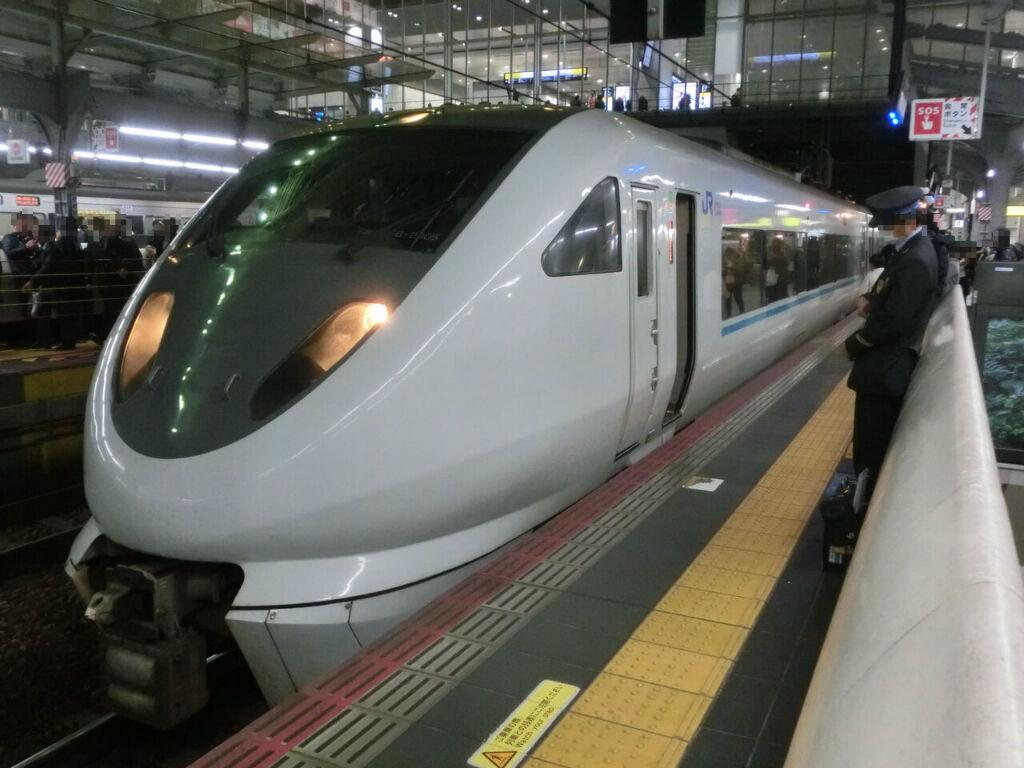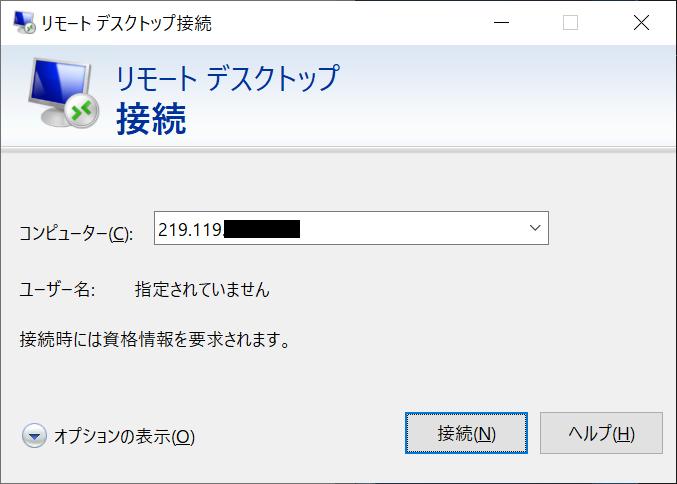Railway companies have experienced the new coronavirus disaster and have begun to explore transportation businesses other than passengers. A new area that has emerged is cargo transportation.
After 11 am on November 12th. At the ticket gate of JR Yonago Station in western Tottori Prefecture, five boxes of "passengers" arrived on a trolley. The station staff stamps the ticket, passes through the ticket gate, and goes to the platform. The ticket read: "Your customer is a crab."
JR West, which is suffering from a decrease in the number of passengers due to the corona wreck, officially started luggage transportation by train on this day. The first thing to carry was "Kani-sama", not "God". In the morning, 16 live snow crabs (Matsuba crabs) just landed at Sakaiminato are transported to Kyoto Station via Okayama Station, where they are sold at JR Kyoto Isetan, a department store directly connected to the station.
The travel time from Yonago Station to Kyoto Station is 4 hours and 23 minutes, including transfer time. Obsessed with the entire process.
The first train, Yakumo No. 14, is a conventional limited express train that runs from Izumoshi Station (Shimane Prefecture) to Okayama Station. Yonago station is an intermediate stop, and the stop time is only 2 minutes. When the train arrives, passengers board and disembark. After the flow of people is gone, we start loading luggage. The staff on the home side will pass the boxes to the staff on the deck of the vehicle in a bucket brigade method.
Passengers usually load into a business room that they do not see, lock the door, and the attendant gets off. From here to Okayama Station, it is unmanned.
Simulation with a stopwatch
Mr. Dai Matsumoto of JR West's Sanin Sales Department, who saw the series of operations, said with a relieved expression, "We were able to depart safely and on time." Even if the train stops for two minutes, luggage cannot be loaded until passengers have finished boarding and disembarking.
I've been to Yonago Station many times so far and measured how long it took to get on and off with a stopwatch. Based on that data, we have repeated simulations of loading operations using actual vehicles parked in garages. The results have been spectacular.
Loading at Yonago Station is just the first hurdle. About two hours later, the next barrier came. Transshipment at Okayama Station is the biggest highlight of this transport.
The Yakumo 14 arrived at Okayama Station at 1:38pm. To get to Kyoto Station, you need to transfer to the Sanyo Shinkansen here. The designated train is the "Mizuho 606" bound for Shin-Osaka departing at 1:53 pm. Transfer time is 15 minutes.
But I can't say I can afford it. Except for passengers who move by themselves, luggage transportation requires unloading by staff, moving by trolley, and loading again.
At Okayama Station, as at Yonago Station, passengers have the highest priority. After all the passengers got off, loading and unloading began by the staff waiting at Okayama station.
The 5 boxes of crabs on the trolley are put on the elevator and go from the conventional line platform on the 1st floor to the concourse on the 2nd floor. Then, weaving between passengers, we proceed to the Shinkansen transfer ticket gate and are put on the elevator heading to the Shinkansen platform on the 3rd floor.
A close call, a successful transfer
A trolley carrying crabs doesn't come to the Shinkansen platform. "Soon, the Mizuho 606 bound for Shin-Osaka will arrive at platform 24." Just in the nick of time, when the guidance announcement began to flow, the trolley finally appeared. Elevators were also given priority to passengers, and passengers with children and the elderly were put on first.

Mizuho 606 arrived on time, but soon after the door opened, the departure bell began to ring. The stop time at Okayama Station is only one minute. Tighter than Yonago station. However, unlike limited express trains and Kumo trains, Shinkansen trains have special doors for loading goods sold on board. Using that door, loading work was carried out without waiting for passengers to finish getting on and off. We had already confirmed that we could load 4 boxes in 30 seconds based on our preliminary measurements.
Actually, only 2 of the 5 boxes were loaded onto the Shinkansen here. Three boxes were left for sale at the Okayama Station shop. Normally, it would be more efficient to sort the items in the concourse on the 2nd floor, but it was determined in advance that there was not enough time to do so. I once carried everything to the Shinkansen platform on the third floor. It's just a tightrope transfer.
Mizuho 606 ran eastward at a maximum speed of 300 kilometers per hour and arrived at Shin-Osaka Station, the final stop, in just 45 minutes. This is the second transfer here. This time we have 48 minutes until the next train, so we have to wait for a while at the baggage check in the station. Then, at 3:26 pm, I was put on the limited express "Super Hakuto No. 8" bound for Kyoto, and headed for my destination, Kyoto Station.
Live crab brandishing scissors
We arrived at Kyoto Station at 3:48pm. From Shin-Osaka to Kyoto, the special rapid train runs every 15 minutes. However, the reason why I waited for the limited express train was because I could secure a dedicated space for my luggage instead of putting it in the passenger room, and I had enough time to load and unload it at the end of Kyoto Station.
It was 4:00 pm when I arrived at JR Kyoto Isetan through the baggage passage from the platform. When the box was opened, a live crab brandished its claws, and the staff exclaimed, "It's so lively. This is definitely delicious."
Three of the six crabs that arrived in Kyoto were reserved by regular customers. The remaining three cups were sold by lottery at the store. The market price was 24,000 yen, but it was sold at half the price of 12,000 yen as part of JR West's PR.
JR East and JR Kyushu have already commercialized luggage transportation by rail. JR West is a latecomer, but it is also because they tried to tackle transportation with high hurdles.
JR East and JR Kyushu basically load at the starting station and unload at the terminal station, considering the time it takes to load and unload. JR East will begin loading and unloading luggage at Omiya Station, an intermediate stop on the Tohoku Shinkansen line, from December, but plans to extend the stop time from one to five minutes for that purpose.
On the other hand, this time, JR West will load and unload at stations with a short stop time of 1 to 2 minutes. In addition, we also carried out relay transportation that connects conventional line limited express and Shinkansen.
The strength of railways is the network
"The strength of railways is the network of routes," says Kou Uchiyama, manager of the sales division in charge of cargo transportation. In the case of truck transportation, the cargo collected in each area is collected at the distribution base, transferred to a large truck, transported at night, and then redivided and delivered at the distribution base. Therefore, it will arrive the next morning at the earliest.
On the other hand, in the case of railways, same-day delivery is possible by combining conventional lines that run during the day with the Shinkansen. Airplanes are a rival for same-day delivery, but there are bottlenecks, such as the fact that airports are far from urban areas and that the route network is limited compared to railroads. For example, in the case of this time between Yonago and Kyoto, there is no other way but to transport it to Haneda once by air.
JR West operates only the Sanyo Shinkansen (Shin-Osaka to Hakata) and the Hokuriku Shinkansen (Kanazawa to Joetsu-Myoko). The situation is different from that of JR East, which has a Shinkansen network that runs from Tokyo to each prefectural capital in the Tohoku region, Niigata, and Nagano without changing trains. Loading and unloading at stops along the way, as well as transfers to conventional lines, were essential to expanding the target area for cargo transportation.
In order to further expand the target area, transportation beyond the business area will be necessary. The Hokuriku Shinkansen has already started transporting cargo between Hokuriku and the Tokyo metropolitan area in partnership with JR East, which runs through the line. The Sanyo Shinkansen teamed up with JR Kyushu, which operates the direct Kyushu Shinkansen, and transported crabs from Yonago to Kagoshima on November 19. In the future, if discussions with JR Tokai, which operates the Tokaido Shinkansen, progress, cargo transportation connecting Sanyo, Sanin, Kyushu and the Tokyo metropolitan area will be considered.
I was worried about the old train swaying...
In terms of the height of the hurdle, transporting live crabs was also a challenge.
Mr. Uchiyama previously served as the stationmaster of Matsue Station, and has been involved in the development of special products in the San'in region. He is well versed in the ecology of crabs, and says, ``Actually, when crabs sense danger, such as strong vibrations, they may cut off their own legs.'' Just like cutting off a lizard's tail, the cut off legs are used to attract the attention of predators and buy time to escape.
In other words, if it can be transported to its destination alive and in perfect condition with its legs intact, it proves that the transport quality is high.
The Shinkansen is focusing on improving the comfort of the ride, and I was confident that there was little vibration. However, the limited express Yakumo on the conventional line runs on a route with many curves. It is the oldest limited express train, and it continues to use the cars manufactured by the former Japanese National Railways about 40 years ago, and it is said that there is a lot of shaking. Even so, the fact that we were able to transport the cargo to Kyoto without any problems this time seems to be an appealing point for new shippers.
No additional investment required
The shippers and recipients of this crab transport were both JR West group companies. "JR-West Group's revenue includes not only transportation costs but also sales of products," said Mr. Uchiyama. On the other hand, the transportation pie is limited. According to Mr. Uchiyama, discussions with logistics giants such as Sagawa Express are currently in the final stages, and it is expected that railway transport will be realized in the form of cargo collection and delivery by logistics majors.
In either case, ``We are using the staff and vehicle space of existing logistics companies within the group, so there is no additional investment at all. Although it cannot be said that the income from each item is large, it will certainly contribute to improving the profitability of the railway business, which has high fixed costs. For that reason, the on-site employees repeated trial and error and managed to commercialize it.
(Nikkei Business Yoshihiko Sato)
[Nikkei Business electronic edition, restructured article dated November 29, 2021]

![EVsmart blog Toyota's electric car "bZ4X" that makes you feel comfortable with electric cars and quick chargers / No% display of battery level [Editorial department] Popular articles Recent posts Category](https://website-google-hk.oss-cn-hongkong.aliyuncs.com/drawing/article_results_9/2022/3/9/752542064665dc2bd7addbc87a655694_0.jpeg)
![Lenovo's 8.8 inch one-handed tab "Legion Y700" full specs released! [Is the price in the 40,000 yen range?]](https://website-google-hk.oss-cn-hongkong.aliyuncs.com/drawing/article_results_9/2022/3/9/207e1be231154e91f34c85b4b1d2126c_0.jpeg)

